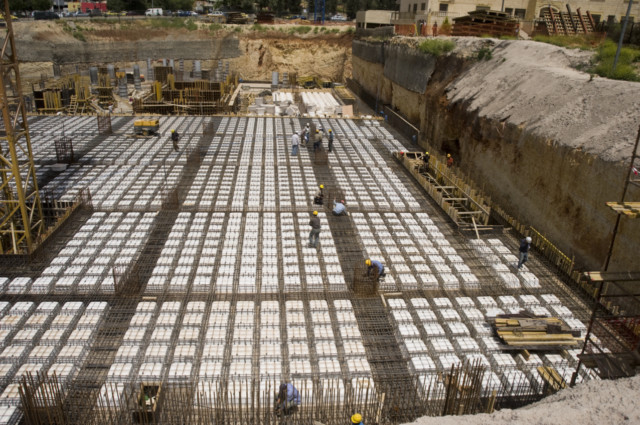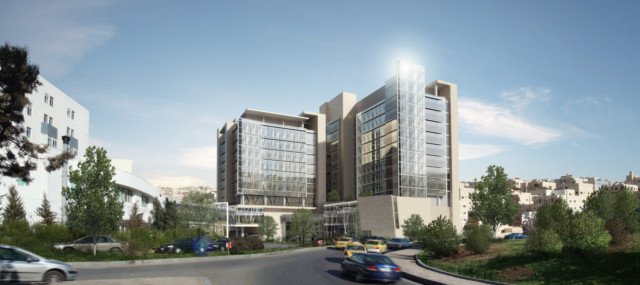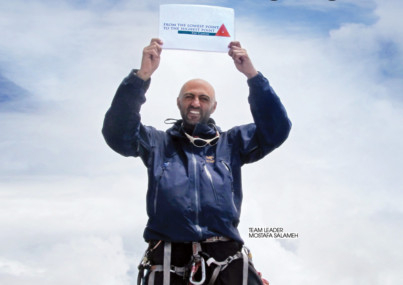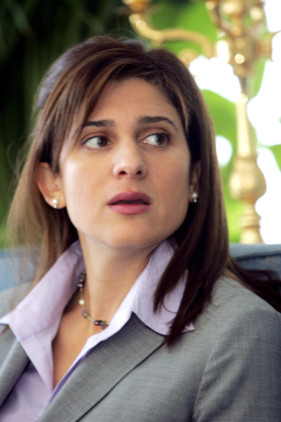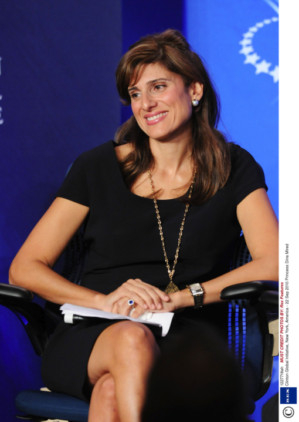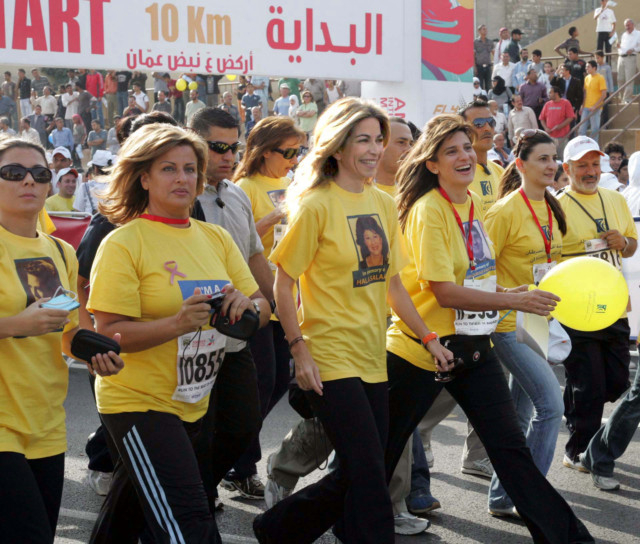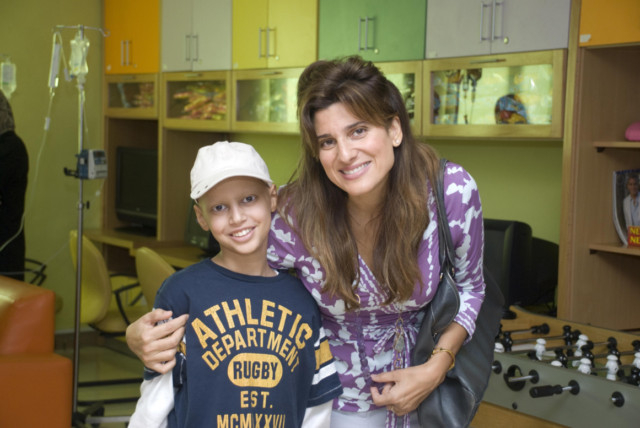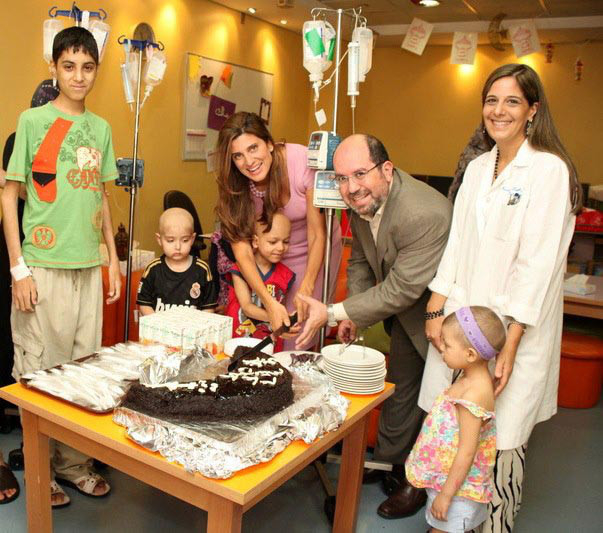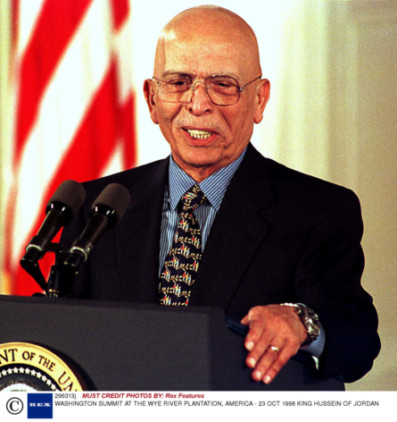
On the walls of the King Hussein Cancer Center — at the main entrance and in some of its family waiting areas — are metallic plaques with the names of the main donors. And outside many of its rooms, plates with sponsors’ names are placed above the doors.
These include individuals, companies, public figures and senior officials from Jordan and many different countries. They all helped Jordan realise its vision of having a cancer treatment centre. And until today, they continue to help the kingdom carry on with the centre’s mission. “The mission of this foundation is to deliver comprehensive cancer treatment to the people of Jordan and the Middle East with the highest ethical standards, and most up-to-date protocols,” said Princess Dina Mired, director-general of the King Hussein Cancer Foundation (KHCF).
The medical arm of the foundation is the King Hussein Cancer Center, which is the only specialised cancer treatment hospital in the region. There are other specialised cancer treatment departments or clinics in the region, but they are part of bigger reputed hospitals, such as the King Faisal Specialist Hospital in Saudi Arabia, the American University Hospital in Lebanon and the Tawam Hospital in the UAE.
The King Hussein Cancer Foundation, which, according to a royal decree law, is a private, independent and non-governmental organisation, is being run like a business, but with a difference, noted Princess Dina. “Its ultimate goal is not to make profit. To run it like a business [means] to run it efficiently and to maximise donations from people so that we can support the centre,” she said.
“We have many messages,” she said. “To market how important the centre [is] for us, [and how this is] a fantastic top-of-the-line centre.
“It is important for us to develop our centre, to protect it, to keep it up to standards, giving exactly the same protocols as a top cancer centre in the United States or Europe, because cancer knows no mediocrity.”
The fundraising arm of the foundation has nearly forty employees working in different fields, including media and accounting, and on all levels — local, regional and international.
The foundation also offers an insurance programme where people pay a minimal fee every year to be covered up to a pre-selected coverage limit for cancer treatment at the centre. There are now nearly 85,000 members enrolled in the programme, Princess Dina said.
There is a team for breast cancer, the most common type of cancer in Jordan. The Jordan Breast Cancer Program team “works around the clock” on different aspects of breast cancer, from awareness and prevention to education and training. Their work is so much more than “just a small pink ribbon campaign in October”. This campaign becomes more of an “icing on the cake” rather than the main focus of the programme.
The result of the foundation’s efforts is encouraging, Princess Dina said. In 2006, 70 per cent of women arriving at the centre with breast cancer were in the late stages of the disease, but now, the percentage has been “halved”, thanks to the awareness campaigns launched on a yearly basis.
In the beginning, the message was focused on breaking the taboo as the people in Jordan and most parts of the Middle East would talk about cancer in hushed tones calling it “that disease”. Later, the campaign focused on the importance of undergoing mammograms at the age of 40. In the third year, the campaign targeted men in conservative societies urging them to encourage the women in their lives to undergo screening tests.
Second leading cause of death
While breast cancer is the most common type of cancer among females, with 36.8 per cent of the total cases, colorectal cancer (12.7 per cent) is the most common type of cancer among men, followed by lung cancer. Cancer is the second leading cause of death in Jordan after heart diseases. According to the 2009 Jordan Cancer Registry’s figures, 4,798 new cancer cases among Jordanians were registered that year, involving 2,280 males and 2,518 females. The same year witnessed 1,752 new cancer cases among non-Jordanians in Jordan, accounting for 26.7 per cent of all the registered cases.
Jordan’s dream of a cancer treatment centre got a push in the early 1990s. It was the emotional commitment and the generosity of many Jordanians, coupled with major grants from abroad, that helped in realising the goal. Generous aid from the Netherlands government and a soft loan from the Islamic Development Bank were instrumental in constructing the centre’s building, which was officially opened in 1997. Initially, it was named Al Amal Center, or “The Center of Hope”. But after King Hussein’s death, it was renamed in his honour.
“King Hussein really was our first public hero. He went on TV without covering his head, without the traditional headdress, boldly showing the effects of chemotherapy, to talk about cancer publicly,” Princess Dina said. “He was such a well-loved and much-respected king, and when people saw how courageously he faced his illness, they were inspired and started to collect for the telethon …. He mobilised the feelings of the public and motivated them to help make a difference.” King Hussein ruled Jordan for nearly 42 years before he died in 1999 of complications related to non-Hodgkin’s lymphoma.
King Hussein was first diagnosed with kidney cancer in 1992. After several weeks of treatment in the US, he returned to Jordan in September, where he was received with fanfare. During the euphoria accompanying the news of his recovery from the first bout of cancer, a telethon day was organised on Jordan’s television. It was then that peoples’ donations poured in to fulfil the dream of establishing the cancer centre.
Today, the United States Agency for International Development (USAid) tops the list of donors to KHCF, followed by an Iraqi philanthropist, Nizar Al Naqib, after whom some units at the centre have been named, including the outpatient clinics building. In addition, there were “generous and significant” donations from prominent figures and institutions in the UAE.
Each year, during the annual “Gala Dinner” hosted by KHCF either in Amman or abroad, including Dubai and Abu Dhabi, many individuals and corporations make large donations. However, cancer requires highly specialised equipment and machinery as well as expensive medicines, and there is always a shortage of funds to support the patients who need treatment.
King Hussein Cancer Center has earned three international accreditations, two from the Joint Commission International (JCI), and one from the College of American Pathologists.
“The disease-specific accreditation from JCI is very important … Many countries in the region have the general accreditation, but we are the only one in the whole developing world that has earned the disease-specific accreditation, meaning they accredit us as a cancer centre. This accreditation lasts for only three years, and then they come again, to check the protocols and the levels of the staff, and they have thousands of demands and standards that must be met,” Princess Dina said.
The centre prides itself on the high-calibre and experienced staff it has. Despite the “tough environment” they work in, their professionalism and kind ways with the public have earned them the respect of the ordinary people. It is for this reason that many ordinary people believe the staff constitutes the core of the public’s pride in the centre.
Jordan, which has a paucity of natural resources, is known for its health institutions and skilled medical staff. In 1975, the Middle East’s first open-heart surgery was performed at the King Hussein Medical Center, another prestigious medical institution in Jordan. Though it is a military hospital, it offers its services to civilians too.
As for King Hussein Cancer Center, Princess Dina said, it would be difficult to say which is the greater achievement, building a worldwide reputation of excellence or its medical feats. “It all comes together. The reputation and credibility is the by-product of the medical achievements,” she said. “I always say our success is [because] of the teamwork we have, the great staff at the centre — from the CEO to the doctors, to the nurses, to the administrators to the cleaners … Every patient is treated with respect, and everybody is getting the top cancer treatment.
“Treatment protocols are not determined by one brain, but all the brains,” Princess Dina noted. She said that every case that reaches the centre is evaluated by a board of health professionals, which comprises a surgeon, a neurologist, a nurse, and oncologists who are specialised in different fields (such as breast, lung or colon) depending on the case.
“From the cleaners to the nurses to the doctors, everybody is geared up to deal with cancer patients — from A to Z,” Princess Dina said.
Box:
The King Hussein Cancer Center (KHCC) has long-term partnerships with two internationally recognised cancer centres: The University of Texas MD Anderson Cancer Center, USA (sister institution), and St Jude Children’s Research Hospital, USA (a strategic partner).
KHCC also has cooperative agreements and partnerships with various cancer institutions in the world, including American University, Beirut, Lebanon;
Augusta Victoria in occupied Jerusalem; Lombardi Center of Georgetown University, USA; Moffitt Cancer Center, USA; National Cancer Institute, Cairo, Egypt; The Sick Children’s Hospital, Canada; and The Stefan Morsch Foundation, Germany.


